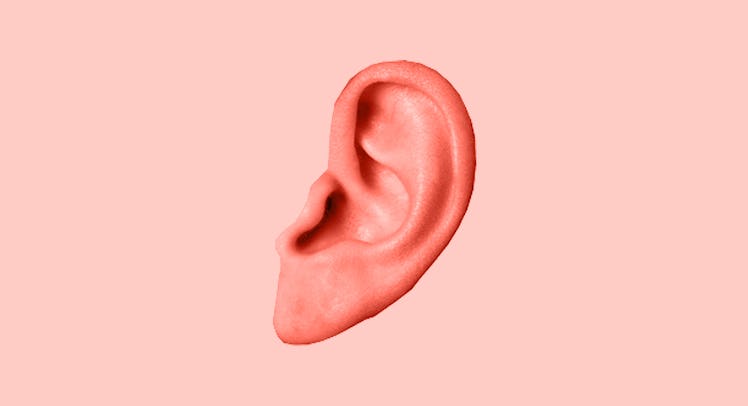How To Tell If Your Baby Has An Ear Infection And What To Do About It
Your kid is definitely getting one of these.

It can be difficult to suss out the signs of an ear infection in a baby when there is so much for babies to be fussy about in general. But baby ear infections are common, and baby ear infection symptoms are fairly distinct. So put down that ear infection app — all you need is some careful observation and maybe a thermometer.
How to Spot a Baby Ear Infection
Ear infections normally start in the nose, and so do symptoms like congestion and grosser-than-normal snot. Kids experiencing ear pain will often tug at the ears and the infections are usually accompanied by general fussiness, ear discharge, an outright fever, or some combination of these symptoms. The fact that there’s often no direct visible sign of infection can be frustrating, but then again “ear discharge” is as nasty as it sounds, so … silver linings.
What to Do When Baby Has an Ear Infection
Unless your kid is having dizziness, vision problems, or visible swelling and redness around the ear, don’t rush to the ER; the most experience that an adult doctor likely has with baby ears is pulling quarters out from behind them. Honestly, you can usually wait until the next morning to take your kid to the pediatrician if you can’t make it when you first spot symptoms. Meantime, put a warm compress on the ear, give Junior some ibuprofen, and read them a bedtime story.
In the morning, you’ll get a professional treatment plan, which will include antibiotics only if your kid is under 1 or also has a high fever and/or pinkeye. Otherwise, there’s a 60 percent chance it’ll miraculously disappear without antibiotics after a couple of days of continued observation and comfort measures. If neither of those options work after 3 to 4 days, go back to the doc.
Because of the aforementioned perpetual colds, your kid might get repeat ear infections. This is normal and only requires evaluation by an ear, nose, and throat specialist if they get four infections in six months or six infections in a year.
Why a Baby Ear Infection Isn’t Inevitable — But Is Damn Likely
Somewhere between 80 percent and 90 percent of kids get some sort of ear infection by the time they hit age 3, most of which occur between 6 and 18 months. This is because ear infections are a common side-effect of colds and — as you’ve definitely noticed if your kid is more than zero days old — kids get colds. All. The. Damn. Time. There’s more to the why and the how of ear infections, but more relevant to you is the what — as in symptoms and treatments.
So, How Do I Avoid Baby Ear Infections?
Keep dreaming, but also try the following: Have your kid breastfeed as long as possible, at least for the first three months, to strengthen the immune system … and their face. Timely pneumococcal disease and influenza vaccinations also decrease odds of ear infections, if you’re so inclined. Finally, wait until they get to about 3 to 5 years old and outgrow ear infections.
This article was originally published on